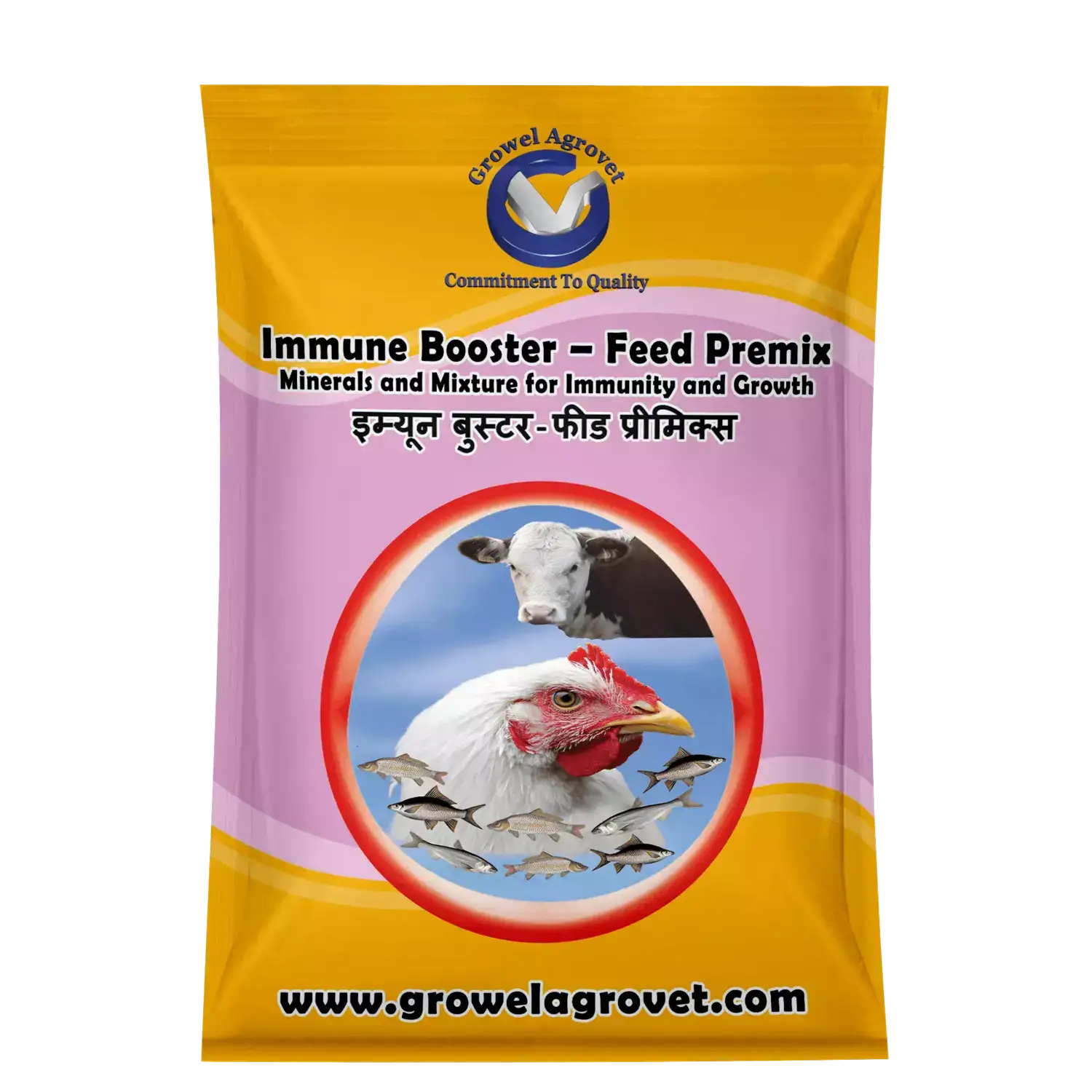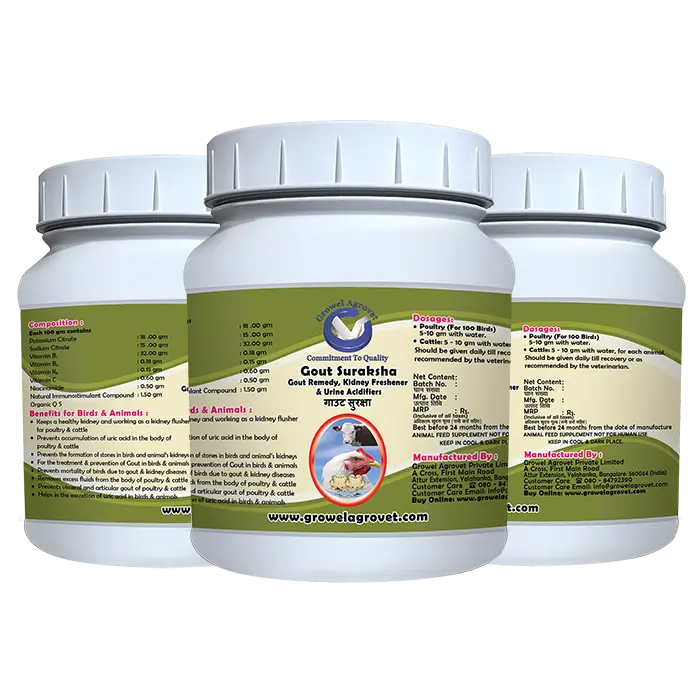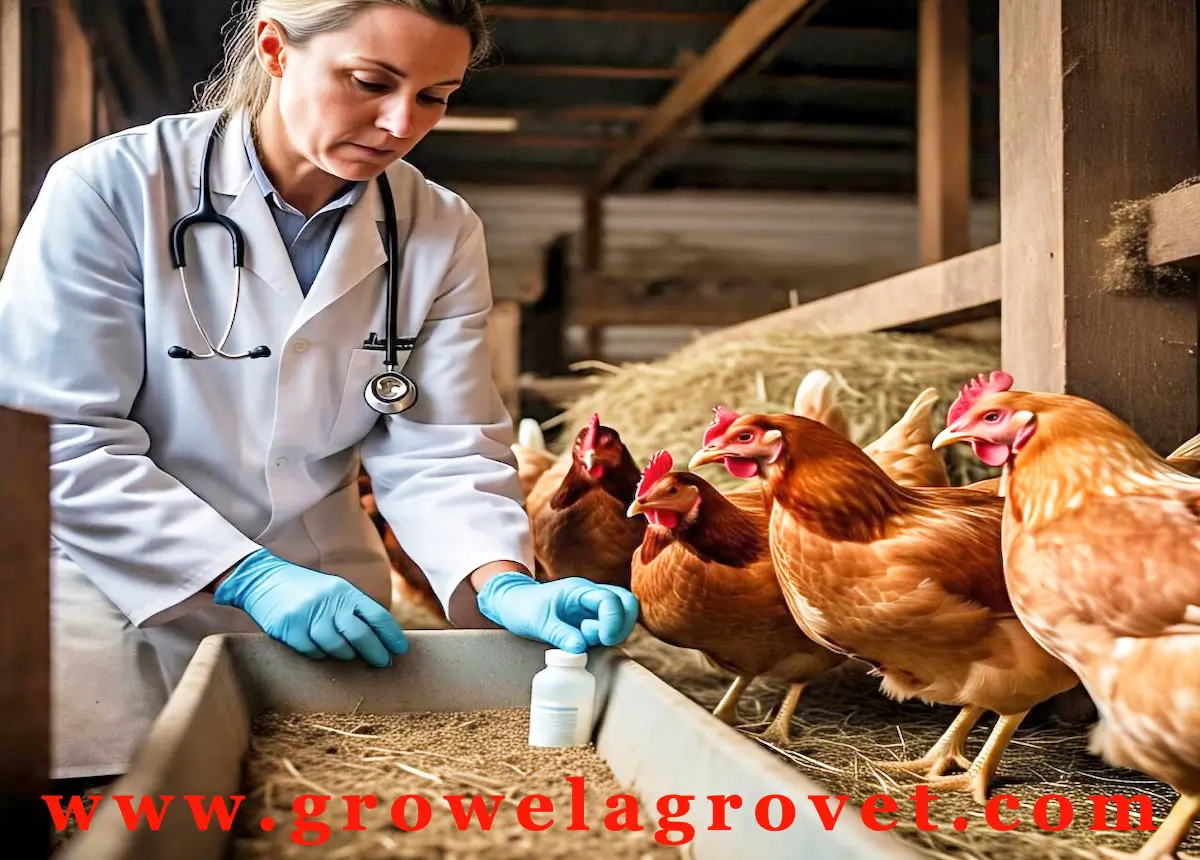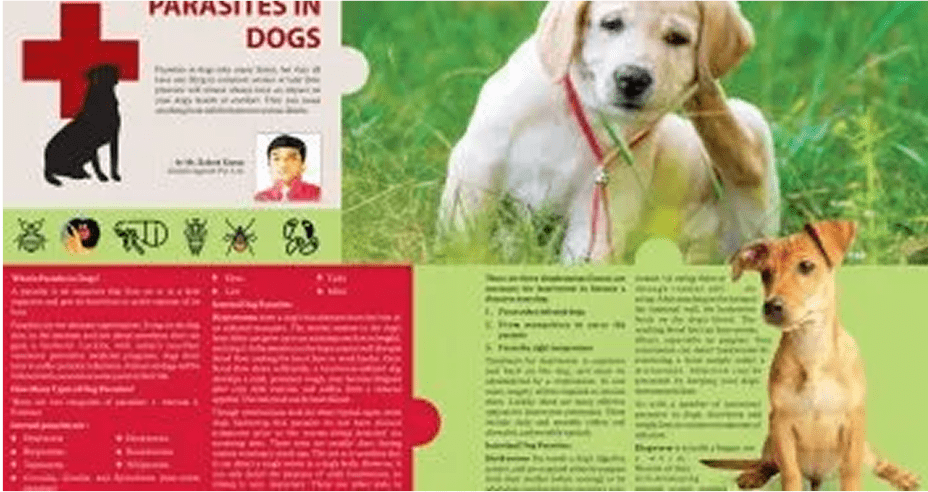 Poultry Science Common Terminology which every poultry owner should know these Terminology of Poultry Science is compiled by Growel Agrovet for proper understanding of poultry and their diseases .
Poultry Science Common Terminology which every poultry owner should know these Terminology of Poultry Science is compiled by Growel Agrovet for proper understanding of poultry and their diseases .
Aves (Avian)
Class of birds pertaining to all species of birds including domestic fowl.
Axial Feather
Also called as index feather. A short feather in the middle of wing., separating primary feathers from secondary ones.
Auto-sexing
Sex differentiation at day-old age on the basis of some visual characters such as colour of down (fluff), early feathering, etc.
Battery
This is the shelter for most of commercial egg type birds in the form of small compartments of wire netting arranged one above the other in vertical configuration in 2-4 tiers.
Balanced
A term that is applied to the ration or feed containing all the known essential nutrients in proper proportions based on the recommendations of recognised authorities (BIS, 1992), in the field of animal nutrition for a given set of physiological requirements of animals.
Brooder
An appliance to supply artifical heat to young ones of poultry from day-old to till warmth is required is known as brooder.
Blood Spots
The common faults in the contents of egg frequently noticed among the eggs of pullets coming into lay in the form of blood clots. The clot may be attached to vitelline membrane of yolk, to chalazae or
to the albumen clue to small haemorrhage of blood vessel during transit of egg contents, down of the oviduct. They look pinkish while candling.
Broiler
It is also called as frier, which is young chicken of either sex, usually 6 to 7 weeks of age (40-45 days), weighing 1.25 to 1.40 kg; that is tender meated with soft, pliable, smooth textured skin and flexible breast bone. Broiler is suitable for broiling or frying,
Broiling
Cooking by applying direct heat with burning of charcoal or cooking in oven, it is also called as grilling.
Brooding
Rearing of baby chicks with careful management from day-old up to warmth is required, usually 3 to 4 weeks in broilers and 6/7 weeks in layer type chicks is known as brooding.
Bantam
A miniature chicken, about one-fourth the size of a regular chicken.
Biddy
Another term for chicks or baby chickens.
Brooding period
The stage of life between hatch and adulthood. Usually lasts from the first eight to 10 weeks of life.
Broody hen
A hen that wants to sit on eggs to hatch them and brood chicks.
Candling
The visual examination of egg by holding it in between the eye and source of light to test internal quality and freshness of egg.
Candler
The appliance used for candling is known as candler. This is a small box fitted with little bulb illuminating rays of light through a focal point.
Cannibalism
It is a vice (bad habit) which may occur in chicken of all ages. It includes feather plucking; vent, head, wing, intestine and toe picking. Causing injuries to comb and wattle due to infighting, egg eating is also one type of cannibalism.
Capon
Castrated male chicken usually under 8 months of age, that grows for longer period than cockerel, good for table purpose as the flesh has better flavour, finer texture and is more tender.
Clutch
A term expressing sequence of egg laying, i.e. number of eggs laid on consecutive days without gap. Length of clutch determines the productivity of bird.
Cage
The wirenetting shelter of bird in the form of compartment with attached feeder and waterer from outside, having different designs for various types and age group of birds, can be hanged to roof or fitted on stands on floor.
Chicken
The domestic fowl (Callus domesficus) usually reared as a farm bird kept for commercial purpose includes improved exotic breeds and desi fowls also.
Chick
The young one of chicken is called as chick. Cock
It is a mature male chicken with coarse skin, toughened and darkened meat along with hardened chest bone.
Cockerel
A young male fowl less than a-year-old, meat of which is comparatively better than cock in respect of its texture, consistency, tenderness, chest bone structure, etc.
Culling
Separation and removal of unproductive or otherwise undesired birds from the flock which are untrue to its type, judged on productive and physical characteristics.
Chick tooth
Sharp end of a chick’s beak used to poke a hole in the egg’s shell during hatching. Also known as an egg tooth.
Cloaca
The opening in chickens through which the intestinal, urinary and reproductive tracts empty.
Coccidiosis
Disease of fowl caused by a microscopic protozoa that causes diarrhea, unthriftiness or death. Occurs most frequently in chicks older than three weeks and in young adults. Transmitted by chicken waste. Prevented by many commercially available coccidiostats that can be added to feed.
Cock
A male chicken over one year of age. Also called an old rooster.
Comb
The fleshy, red-colored growth on top of a chicken’s head.
CRD
Chronic Respiratory Disease, a common disease of chickens that is characterized by sneezing and difficulty breathing. Commonly controlled with antibiotics usually administered in feed or drinking water.
Debeaking
Removal of 1/2 to 1/3rd portion of upper mandible of beak and trimming of lower one in birds is called as debealdng.
Dubbing
The process of removal or trimming of comb and wattles is known as dubbing.
Down (Ruff)
Initial hairy covering of baby chicks or poults, etc. is called down. Similarly, the fluffy part of feather below web and small tufts (hair) sometimes seen as faults on shank and toes of clean legged breeds,
Drumstick
Tibio-fibula of birds prepared for table purpose. Well-fleshed drumsticks is an important point for selection of breeders in broilers.
Dusting or dust bath
Common chicken behavior of bathing with dirt in a dusty shallow depression to rid themselves of mites and parasites.
Egg
The reproductive body produced by female of birds, more or less oval in shape, enclosed in hard calcareous shell within which embryo develops on fertilisation, containing nutrients for development of embryo.
Fowl
A live mature chicken, a term usually used for cocks, hens, cockerels and pullets.
Fount
A water fountain or watering device for chicken.
Franchise (Hatchery)
An aggrement between hatchery and breeding organisation of poultry, where the former sells commercial day-old of branded stock of parent organisation.
Gallus domesticus
The scientific name for a domestic chicken
Giblet
The edible viscera of bird comprising liver, heart and gizzard. Grower
Growing bird of layer type chicken between age group of 9 to 20 weeks.
Gizzard
Internal chicken organ that crushes food with the help of pebbles or grit.
Grower feed
Commercially available feed formulated for adolescent, growing chickens. Usually used from nine to 20 weeks.
Hatch
The young ones of poultry in incubator just borned out of eggs or under broody hen.
Hair Cracks
Fine cracks of hair size in egg shell that can only be seen with the help of candling when eggs are fresh may develop due to thin shells, rough handling, etc.
Hen
Mature female chicken usually more than 11 to 12 months, with meat comparatively less tender than roaster having non-flexible chest bone.
Hatching
The act of coming forth (out) young one from egg is known as hatching.
Incubation
Warming of eggs at certain temperature with specified humidity, ventilation and turning is called as incubation.
Incubation Period
The duration between setting of egg for incubation and hatching. Layer
The adult female chicken reared for producing eggs for domestic consumption.
Layers
Mature female chickens kept for egg production. Also known as laying hens.
Laying feed
Commercially available feed formulated for laying hens. Usually given to chickens beginning at 20 weeks of age.
Marek’s disease
A viral disease common in chickens. Commonly prevented by a vaccination administered immediately after chicks hatch.
Management
The human factor in the production process which delimits production, accumulates information on their solution, analyses information, takes decisions, acts on them and bears responsibilities for action.
Milking
Collection of semen in poultry by applying external massage to testes. Moulting
The natural and normal physiological process of shedding of old feathers and growing new ones annually in poultry.
Newcastle disease
A viral respiratory disease common in chickens. Newcastle disease can spread very quickly within a flock. Commonly prevented with a series of vaccinations.
Picking
Detrimental activity of chickens picking at each other’s feathers.
Pipping
The act of chicks pecking at their shells to break out.
Pullet
A female chicken under one year of age.
Offal
Literally means waste, and usually means, the non-edible parts of gut not sold as giblets plus the head and feet.
Ornithology
The study_ of science of birds other than poultry is known as ornithology.
Poultry
The domesticated species of birds reared for eggs, meat, feathers, etc. includes chicken, ducks, turkey, quail, geese, guinea fowl, etc.
Primary Feathers
Feathers of wings used for flying but not visible when bird is at rest or wings are closed.
Poult
Young one of turkey is known as poult. Pure Lines
A line the individual members of which are genetically pure as a result of continued inbreeding for long time (10-12 generations and more) or with self-fertilisation as the same type as itself.
Random Samples Tests
An independent guide for testing performance of poultry birds under identical conditions by collecting eggs randomly from breeder flocks and testing the progeny.
Roaster
A young chicken usually 3 to 5 months of age of either sex that is tender meated with soft, pliable, smooth textured skin with breast bone may be somewhat less flexible than broiler.
Roost (Perch)
A resting place of fowl at a height usually wooden slats or GI pipes, 5 cm2, round at the top and flat at the bottom, placed horizontally at length-wise sides of house to satisfy bird’s natural instinct to sit at higher place. The perch space recommended per bird is 20-25 cm and perches should be placed at a distance of 35-40 cm apart.
Rooster
See cock.
Scratch
A type of feed that can consist of cracked corn and different types of whole grains. Often fed as a treat for backyard chickens and not used as a main food source.
Sexing
Separation of males and females from group of individuals.
Sexed Chicks
Chicks among which males and females have been separated. Straight Run Chicks
Chicks among which sexing is not carried out. Usually broiler chicks are straight run chicks.
Sexing Error
Number of males designated as females during sexing due to faulty sexing.
Spent Hen
A hen who have completed her production life. Usually 1st laying cycle is completed at 72 weeks in layers.
Secondary Feathers
Large (quill) feathers of wing which are not used for flying but visible when wings are closed.
Starter feed
Pre-mixed commercial food for chicks, commonly available at feed or farm stores. According to University of Florida animal science experts, starter feeds usually contain about 20 percent crude protein and the vitamins and minerals needed by chicks. These feeds usually are also medicated. Should be fed to chicks for the first six to eight weeks of life.
Straight-run chicks
Chicks that have not been separated according to sexes. Chicks that have been separated are known as sexed chickens.
Turn
The act of turning incubated eggs to prevent the embryos from sticking to the shell membranes.
Unthrifty
Term often used when raising chickens to describe unhealthy individuals that are failing to thrive or won’t put on weight.
Wattles
The fleshy, red-colored growths that hang from the side of a chicken’s beak.
Terminology of Ducks:
Bill -Beak
Web -The flat skin between three front toes in all water fowls
Duck -Specifically female
Drake– Specifically male
Duckling – Young one of duck
Drakelet – A current season male duck.
Please visit this link to know about strongest & result oriented poultry healthcare products.
















































